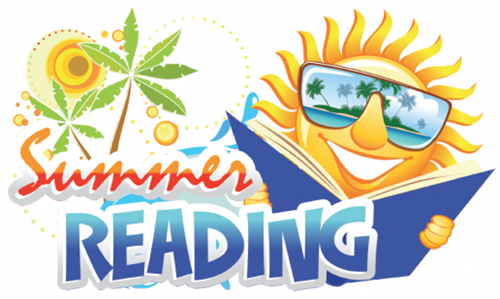Some Tips on Summer Reading From An English Teacher
Image via
Dear Parents and Guardians,
Greetings from a middle school English teacher! It is finally June, which means your children (and their teachers) are about to break free from the classroom for two sun-filled months of summer. While your kids may have a long list of “Must-Dos”(sleepovers at friends’ houses, water ice runs, trips to the zoo, fireworks down the shore) to accomplish in these brief eight weeks, one “must-do” that they may be dreading is their summer reading assignment.
Local school districts are now requiring high school, middle school, even elementary school students to read novels over the summer so that they can practice and retain the reading comprehension skills that they learned during the school year. Sure, most kids moan when they hear “summer” and “reading assignment” in the same sentence, but summer reading doesn’t mean that their summer is doomed.
Here are some helpful tips on how your child can successfully complete his or her summer assignment with enough time to spare for barbeques and pool parties:
When you ask your child about a summer reading assignment, does he avoid eye contact and deny any knowledge of one? Double-check his school website for information on summer reading.
Most school districts provide a link for each grade level on their homepage, or on the English/Language Arts page. Here are three examples of local school districts that have summer reading links on their websites: Cherry Hill Public Schools, Lower Merion School District, Washington Township Public Schools.
If your child’s school is unable to provide each student with a copy of the assigned novel(s), bookstores like Barnes & Noble usually carry numerous copies of local districts’ summer reading books and group them together on display. Common high school titles include The House on Mango Street and The Odyssey. If you are a teacher with a child, remember that most bookstores and online retail outlets offer educator discounts.
Help your child create a reading schedule. A schedule almost always guarantees that your child will finish his or her book on time, and it will help your child feel less overwhelmed. To do this, hang a calendar (dry erase calendars allow you to easily make schedule changes) in an area of the house where everyone gathers so that both you and your child can see the calendar (I recommend the kitchen). You can figure out the reading schedule in two ways:
If you want the reading finished in a certain number of days: Divide the number of pages in the book by the number of days you want your child to read. For example, if the book is one hundred pages, and you want your child to finish the book in five days, then he or she will have to read twenty pages, every day, for five days.
If you want your child to read only a certain amount of pages a day (especially if your child is easily overwhelmed or has a deep desire to do anything but sit and read): Divide the number of pages in the book by the number of pages your child commits to reading a day. For example, if the book is one hundred pages, and your child will only read ten pages a day, then it will take him or her ten days to finish reading.
Write these page goals on your calendar and cross off each day’s goal after your child has completed it. This strategy is simple, but it works. Plus, it teaches your child organization and time management skills.
If you have the time, read the same book that your kids are reading (if you haven’t already read it). If you don’t have time to read the whole book, invest in CliffsNotes or SparkNotes (for you, not your son or daughter!). Together you can discuss important characters, major plot events, figurative language, and the author’s intent.
React to the book! Your reactions will inspire your child to share his or her reactions with you. If you or your child feels confused about an event in the book, talk about it so that you can work through the confusion. This not only bonds you, but it also allows you to gauge how much of the story your child comprehends.
Have your son or daughter take notes while reading. This can be done on a Post-it note, which he or she can stick directly onto the pages of the book, or in a notebook. Notetaking allows children to keep track of key characters, plot, and questions that they might have while reading.
Ask your son or daughter to review his or her notes a couple of days before the summer ends and school begins. Reviewing notes (and rereading or skimming parts of the book) will refresh your child’s memory and prepare him or her for the first week of school.
Throw a post-reading party at your home as a summer reading incentive. The party’s theme can be based on the book your child read. You can serve food and drinks according to those mentioned in the book, OR you can watch the movie version together and discuss the similarities and differences between the novel and film, BUT DO NOT WATCH IT UNTIL AFTER YOUR CHILD READS THE BOOK! The book and film are never the same.
Follow this advice, and your child will have his or her reading assignment completed before you can say “Back-to-School Shopping.”


